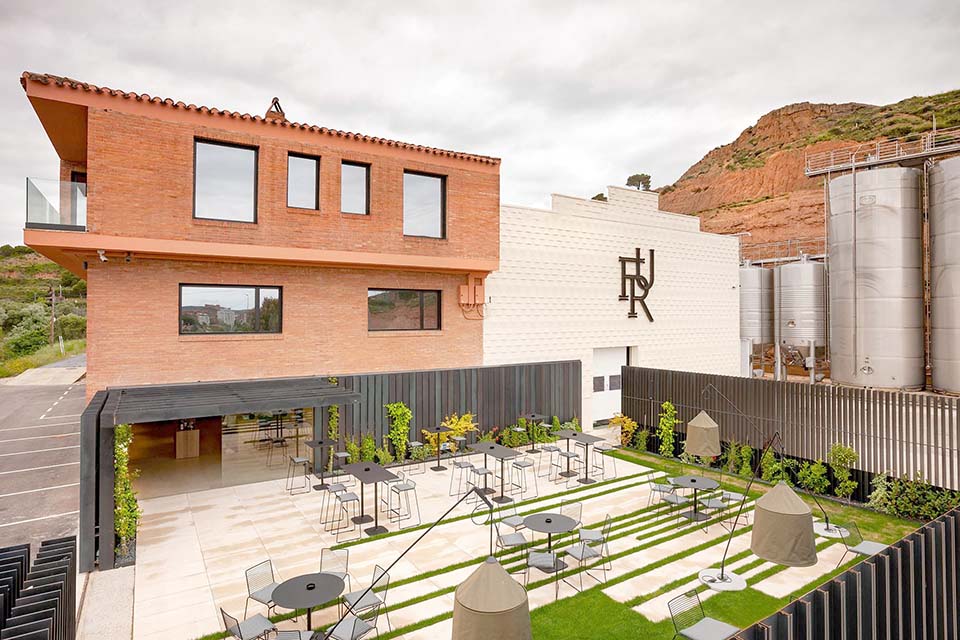
“Stays mainly in the plain…” I hear you murmur, or at least you might murmur those words if you’ve seen the musical My Fair Lady in which the well-known phonetician Professor Higgins attempt to rid Eliza Doolittle of her East London Cockney accent. Many years ago, I used to work in London’s East End, where many of the locals would pronounce the sentence something like, “The rine in Spine sties minely in the pline”.
The vines on the other hand, grow mainly in the hills or at least, the better ones do. In Europe, the southern slopes of hills are favoured because of their exposure to the sun. Some of the best wines from the Rioja region of Spain come from grapes grown at relatively high elevations in several fertile areas along the Ebro River, protected from the Atlantic breezes by a jagged mountain range known as the Sierra de Cantabria. And in case you’re wondering, the name Rioja is pronounced ree-OCH-ah in which the “OCH” sounds a bit like the last two letters of the Scottish word “loch”.
The region produces both red and white wines though the reds are more popular. They use one of Spain’s national grapes, the Tempranillo the name of which comes from the Spanish word temprano (“early”), because it tends to ripen several weeks before the others. In Rioja, Tempranillo is usually blended with small quantities of other grapes notably Garnacha, better known by its similar French name Grenache. The grape probably originated in the Aragon region of northern Spain but it spread rapidly and today, it’s one of the most widely-planted red grapes in the world.
It’s important to know that there are four types of Rioja, depending on how long they have been aged. Entry level red wines are simply labelled Rioja and they’re young wines, often described on the label as Joven. They have no ageing requirements but enjoyed for their freshness. The next level is Rioja Crianza which are aged up to a year in the barrel and a few months in the bottle and at this level, some of the characteristics of Rioja appear.
The next level is known as Reserva and they’re aged at least three years. It’s a more serious wine, with at least one year in the barrel. At the top of the tree, the Gran Reserva wines are aged for a minimum of five years but made only in exceptional years using the best-quality grapes. They often have a high sugar concentration with a more defined structure and sometimes aged much longer than the legal requirement.
Faustino Rivero Ulecia Rioja Joven, Bt 650 @ Wine Connection, Pattaya
Faustino Rivero Ulecia is a wine group established in 1899 by Olegario Rivero. Since then, the Rivero family has been dedicated to the cultivation, production and aging of Rioja wines. The word Joven means “young” but if you have been reading carefully, you’ll know this already. This is the key word really, because when you buy a Rioja Joven, you don’t expect to find the rich and eloquent character than comes with older Reserva wines.
 This wine is the typical blend of Tempranillo and Garnacha, grown between 300 and 600 meters above sea level. It’s a dark, cherry-red colour with hints of violet. The aroma is slightly restrained at first, so it’s probably a good idea to aerate the wine before use. You can buy a clever little device which plugs into the top of the bottle and aerates the wine as you pour it but quite honestly, I prefer to simply pour the wine into another container, usually a wine jug or glass decanter. This aerates the wine thoroughly, especially if you leave it to rest in the decanter for about twenty to thirty minutes. This process is quite important for some wines (but not all), because it reduces any initial acidic notes in the taste and tames the tannins. The air contact really transforms this wine, and brings out the intense black fruit and cherry aromas. You might even detect sweet, vanilla-like oaky notes and (if you have a good nose) a hint of dark chocolate.
This wine is the typical blend of Tempranillo and Garnacha, grown between 300 and 600 meters above sea level. It’s a dark, cherry-red colour with hints of violet. The aroma is slightly restrained at first, so it’s probably a good idea to aerate the wine before use. You can buy a clever little device which plugs into the top of the bottle and aerates the wine as you pour it but quite honestly, I prefer to simply pour the wine into another container, usually a wine jug or glass decanter. This aerates the wine thoroughly, especially if you leave it to rest in the decanter for about twenty to thirty minutes. This process is quite important for some wines (but not all), because it reduces any initial acidic notes in the taste and tames the tannins. The air contact really transforms this wine, and brings out the intense black fruit and cherry aromas. You might even detect sweet, vanilla-like oaky notes and (if you have a good nose) a hint of dark chocolate.
On the palate, there’s plenty of fruit up-front and to me, the wine seems quite light-bodied. It has a lovely smooth and silky texture as well as gentle grip of ripe, dry tannins. There’s also a longish dry finish in which the fruit and tannins seem to come forward. I’ve always found that lighter reds invariably taste better when served on the coolish side. A light and fruity Beaujolais for example really comes to life when it’s chilled. Rioja doesn’t need that treatment. If it’s too cold it could taste rather tannic and unbalanced, so slightly cool is quite enough. The makers suggest 14-16 ºC (or 57-60º F) which to my mind is about right. This seems to me a good-quality entry-level Rioja and would make an excellent partner for red meat, lamb, game and some cheeses. If you’d like something a bit different, give this wine a try but remember to give it 20-30 minutes rest in a wine jug or decanter before you taste it.
 |
 |
 |





